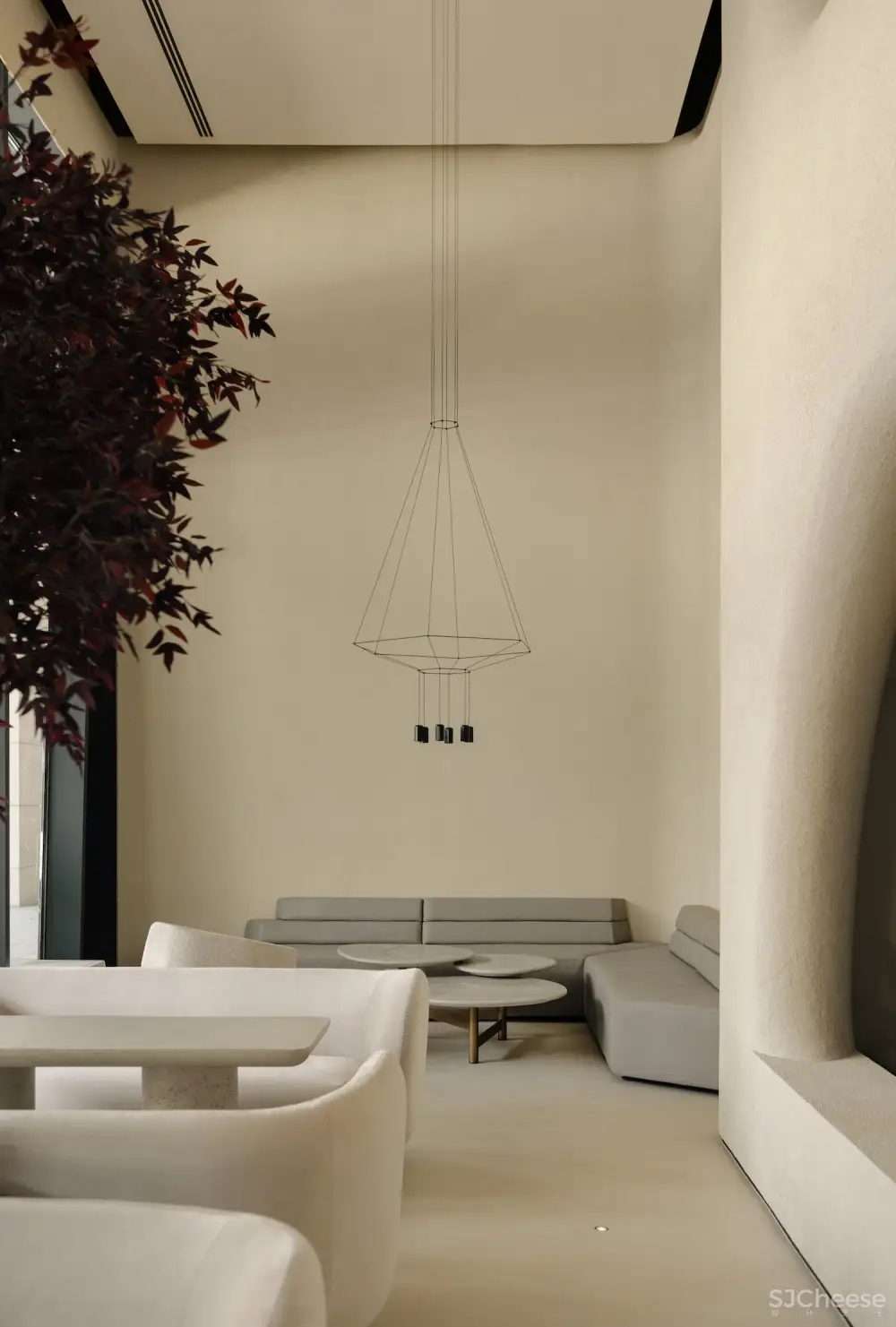

Hplace Cafeteria 是位于阿拉伯联合酋长国迪拜的极简主义空间,由 ATELIER PROTOTIPI 设计。这个内部的天才之处在于它看似简单。乍一看似乎极简主义的东西,仔细观察就会发现自己具有深厚的质感。石灰华块——有些抛光成精致的光泽,有些则故意生硬——在精致和粗犷之间创造了视觉对话。这种物质性与格伦·亚当森 (Glenn Adamson) 所说的“思考之手”相呼应,其中工艺知识不是以装饰而是以基本结构的形式表现。
Hplace Cafeteria is a minimalist space located in Dubai, United Arab Emirates, designed by ATELIER PROTOTIPI. The genius of this interior lies in its deceptive simplicity. What appears as minimalist at first glance reveals itself as deeply textural upon closer inspection. Travertine blocks—some polished to a sophisticated sheen, others intentionally raw—create a visual dialogue between refinement and ruggedness. This materiality speaks to what Glenn Adamson might call “the thinking hand,” where craft knowledge manifests not as decoration but as fundamental structure.


空间不是通过传统的门槛展开,而是通过雕刻的隧道和有机孔隙展开,与数千年来一直庇护沙漠居民的洞穴住宅相呼应。就像 Carlo Scarpa 在 20 世纪中叶重新构想建筑转型的方式一样,HPlace 重新诠释了我们对内部发展的理解。我们不仅仅是在空间中移动;我们体验的是揭开面纱的叙事。
The space unfolds not through conventional thresholds but through carved tunnels and organic apertures, echoing the cave dwellings that have sheltered desert inhabitants for millennia. Much like how Carlo Scarpa reimagined architectural transitions in the mid-20th century, HPlace reformulates our understanding of interior progression. We don’t simply move through spaces; we experience a narrative of unveiling.


也许最引人注目的是技术精度和手工变化之间的相互作用。蜂蜜石灰华和奶油色珠皮呢营造出触觉上的温暖,而 Davide Groppi 的 Moon 灯具则引入了空灵的现代存在。这种平衡反映了当代设计中数字完美与人情味之间更广泛的紧张关系——这是 21 世纪物质文化的核心关注点。
Perhaps most striking is the interplay between technological precision and artisanal variation. The honey travertine and creamy bouclé create tactile warmth, while Davide Groppi’s Moon fixture introduces an ethereal contemporary presence. This balance reflects the broader tension in contemporary design between digital perfection and the human touch—a central preoccupation of 21st century material culture.


当白昼屈服于夜晚时,全景玻璃消除了内部和外部之间的界限,使露台和内部融合成一种单一的体验。这种转变说明了一种更深层次的哲学,即设计不是强加于人,而是回应——对光线、对环境、对人类的存在。Miniforms 的玻璃桌成为光的容器,随着时间的流逝,从固体物体转变为发光实体。
As daylight surrenders to evening, the panoramic glass dissolves the boundary between inside and out, allowing the terrace and interior to merge into a single experience. This transformation speaks to a deeper philosophy where design doesn’t impose but rather responds—to light, to context, to human presence. The glass tables by Miniforms become vessels of light, transforming from solid objects to luminous entities as day progresses.






